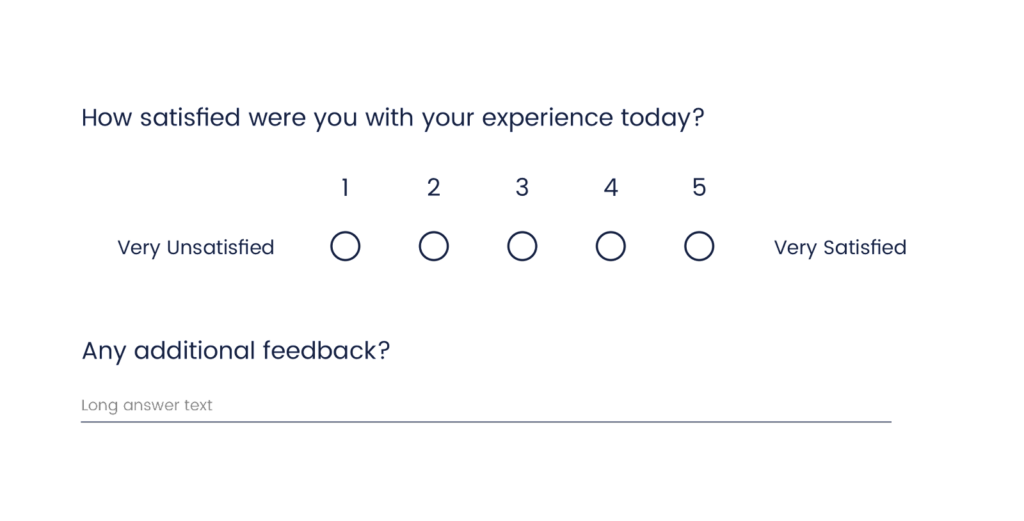Satisfied customers are the key to the sustainability and growth of your company. However, keeping your customers satisfied is not enough for the ultimate business success.
Paying attention to the numbers behind customer satisfaction is what distinguishes exceptional businesses.
Not particularly sure where to begin with customer satisfaction analytics? This article will help you get started!
You will learn about the fundamental key performance indicators (KPIs) to monitor and measure customer satisfaction.
Do You Really Need to Monitor Customer Satisfaction Metrics?
Companies increasingly realize that their overall success and profitability depends on their ability to satisfy customers, shares her observations with Anthony Russell, a marketing specialist from EssayWritingService – “Yet, some businesses are still struggling to adopt a more customer-centric mindset.”
Here are the key five reasons to measure customer satisfaction KPIs:
- A better understanding of the customers’ needs, pain points, and expectations.
- Reduced direct and indirect costs associated with customer dissatisfaction.
- Improved overall company’s brand image.
- Improved customer acquisition process.
- A better product-market fit.
Fortunately, customer satisfaction can be measured and monitored based on the five key performance indicators (KPIs).
1. Net Promoter Score (NPS)
Net promoter score (NPS) is a metric that helps you identify the percentage of customers who are likely to recommend your business to their family and friends.
NPS is a fundamental customer satisfaction KPI. It’s relatively simple to measure and gives you a pretty accurate idea about how many customers are satisfied enough to refer you to others.
How to Calculate NPS?
You first have to survey your customers to calculate NPS. Here is an example of a typical NPS question:
“On a scale from 1 to 10, how likely are you to recommend [your brand’s name] to a friend or a family member?”
After you’ve surveyed your customers, their responses can be categorized into three groups:
- Detractors – customers who answered with 0-6
- Passives – customers who answered with 7-8
- Promoters – customers who answered with 9-10
Here’s a great visualization of how you should categorize customers based on their responses.

Net promoter score formula with promoters, passives and detractors charts. Vector nps infographic isolated on white. Illustration of nps promoter marketing, net promotion teamwork organization
When you know the percentage of detractors, passives, and promoters, use this formula to calculate the net promoter score.
NPS = % of Promoters – % of Detractors
2. Customer Satisfaction Score (CSAT)
Customer satisfaction score will help you measure the average satisfaction score among your customers. Typically, CSAT is used to measure how satisfied your customers are with a specific one-time interaction, like making a return or contacting customer support.
How to Calculate CSAT?
Just as NPS, CSAT requires you to survey your customers. Typically, you would ask customers to evaluate their experience with your brand after completing a particular interaction.
Here are some examples of CSAT surveys.


Once you’ve gathered customer responses, you can use this formula to calculate CSAT.
CSAT = (Total Number of Satisfied Customers ÷ Total Number of Responses) × 100
3. Customer Effort Score (CES)
Customer effort score (CES) the third most popular customer experience metric that helps you measure how much work your customers have to go through to do business with your company.
Similar in measurement to NPS and CSAT, CES is used to assess the easiness of a single interaction.
How to Calculate CES?
To calculate CES, you will have to survey your customers. A typical question for a CES survey is “How much effort did you have to put to resolve this issue?” and it usually has a five- or seven-point scale system.
Here are some examples of CES questions.


When you know the percentage of customers who said that it was either difficult or easy to do business with you, you can use this formula to calculate CES.
CES = % of Customers Who Said it Was Easy to Deal with Your Business – % of Customers Who Said it Was Difficult to Deal with Your Business
4. Retention Rate
Customer retention rate is another customer satisfaction KPI that measures how well you retain customers over a particular period of time.
By measuring the retention rate, you will know exactly how many customers come back to make a second purchase.
Did you know that it can cost you five times more to attract a new customer than it does to retain an existing one?
That’s why it’s important to understand the connection between customer satisfaction and customer retention. You can start by measuring your retention rate.
How to Calculate Retention Rate?
Use this formula to calculate the customer retention rate.
Retention Rate = ((E – N) ÷ S) × 100
Where E is the number of customers at the end of a given period.
N is the number of customers acquired during the given period.
S is the number of customers at the start of a given period.
5. Customer Service Performance
Customer service performance is the last performance indicator closing our list.
Although it’s not a traditional customer satisfaction KPI, analyzing how well your customer service team manages inquiries is a critical part of measuring customer satisfaction.
To assess your customer service efforts, monitor and analyze the following metrics:
- Customer service speed
- Average resolution time
- Active issues vs. resolved issues
- Complaint escalation rate
Final Thoughts
In order to understand how satisfied your customers are, you have to measure 5 main key metrics. NPS helps you to find out how likely customers are to tell you about your business or online business and product.
CSAT gives you a better understanding of how satisfied customers are with one specific interaction. With the help of CES, one can define how difficult it is to interact with your brand.
The retention rate showcases how many customers were satisfied enough to shop with you again. The last one is customer service performance since efficient and helpful customer service is key to customer satisfaction.
It may seem like too much work. However, measuring your customer satisfaction is essential if you want to understand your customers better, reduce costs of their dissatisfaction, improve brand image and customer acquisition process.
Making an effort to measure and fix problems that you have found is extremely beneficial and worth the hard work.
Moreover, you do not even have to measure every single KPI. If 5 metrics are too much or you do not have a customer service team, take only those metrics that are relevant for your business or are more possible for you to measure.
Measuring customer satisfaction KPIs is a rough patch but you will be amazed by the results. Get started now!
Jonathon Spire
Latest posts by Jonathon Spire (see all)
- 5 Best Sites to Buy Negative Google Reviews in 2024 (1 Star, 2 Star) - April 27, 2024
- FollowLiker Review 2024 – Is It a Scam? - April 26, 2024
- IG-UP Review 2024 – Is IG-UP a Scam? - April 26, 2024



